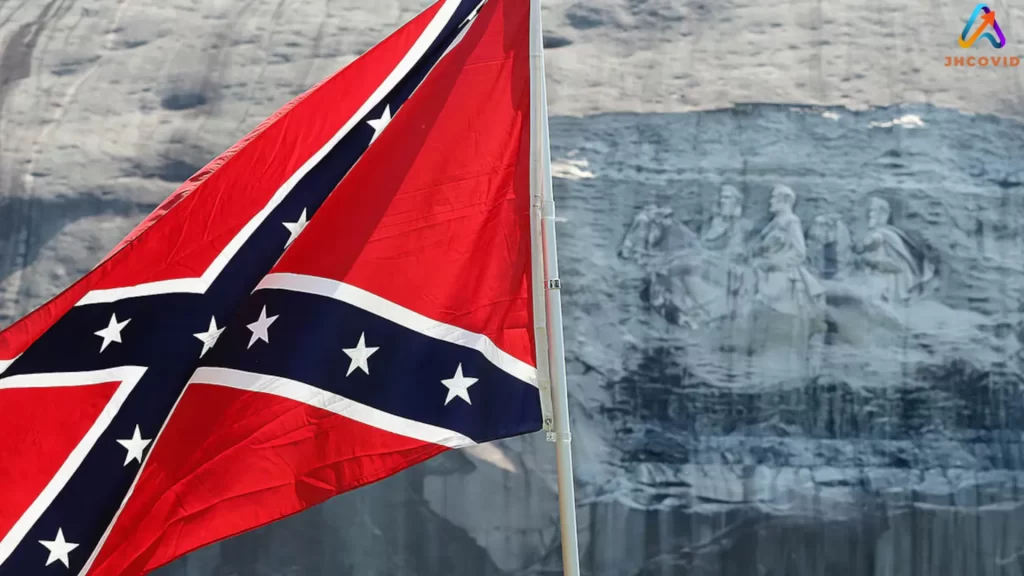The Ku Klux Klan flag, an emblem steeped in a tumultuous history, serves as a stark reminder of a period marked by intense racial discord and the struggle for civil rights in the United States. This article delves into the origins, symbolism, and the enduring impact of the Ku Klux Klan flag on American society, providing a nuanced exploration of its historical and contemporary significance.
The Ku Klux Klan Flag
The Ku Klux Klan (KKK), established in the wake of the Civil War, adopted the flag as a symbol of their ideologies, rooted in white supremacy and racial segregation. The flag’s imagery, often associated with intimidation and hate, has evoked strong reactions throughout its existence, symbolizing a legacy of bigotry and violence.
The Emblem’s Origins and Symbolism

The Ku Klux Klan flag, bearing the cross and the blood drop, represents the organization’s foundational principles of racial purity and Christian identity. Its inception dates back to the earliest days of the Klan’s formation, serving not only as a marker of membership but also as a tool of intimidation against African Americans and other minority groups.
The Flag’s Role in Racial Segregation and Violence
Throughout its history, the Ku Klux Klan flag has been a potent symbol of fear and oppression. Its presence at rallies, lynching’s, and other acts of racial violence underscored the Klan’s commitment to upholding white supremacy through terror and coercion.
The flag’s imagery has been indelibly linked to some of the darkest chapters of American history, including the era of Jim Crow laws and the civil rights movement.
The Ku Klux Klan Flag in Contemporary Society
In recent years, the Ku Klux Klan flag has experienced a resurgence, often brandished by groups espousing hate and bigotry. Its display at events and in public spaces reignites debates about free speech, historical memory, and the ongoing struggle against racism. The flag’s enduring visibility is a testament to the deep-seated racial divisions that continue to challenge the nation.
The Evolution of Public Perception
Over the decades, the public perception of the Ku Klux Klan flag has undergone a significant evolution. Initially, it was viewed by many within the white supremacist movement as a proud symbol of Southern heritage and resistance against the changing tides of racial integration.
However, as the civil rights movement gained momentum and the atrocities committed under this flag became widely publicized, its image transformed. Today, it is largely recognized as a symbol of hate, racism, and an era of injustice that many strive to leave behind. This shift reflects a broader societal change towards greater awareness and condemnation of racial prejudice and inequality.
Educational Initiatives and the Klan Flag
Educational initiatives play a pivotal role in reshaping the narrative around the Ku Klux Klan flag. By incorporating comprehensive histories of the Klan’s activities and the flag’s true symbolism into school curriculums, educators can enlighten future generations about the dangers of racial hatred and the importance of inclusivity.
These efforts aim to dismantle myths of Confederate heritage that often surround symbols like the Klan flag, revealing the stark reality of their origins and the impact they’ve had on marginalized communities.
The Role of Museums and Memorials
Museums and memorials also contribute to the ongoing conversation about the Ku Klux Klan flag and its place in American history. By preserving and presenting artifacts related to the Klan, including flags, robes, and other memorabilia, these institutions offer a tangible connection to the past.
They serve not only as reminders of the atrocities committed but also as spaces for reflection, education, and dialogue. Through thoughtful exhibitions, museums can challenge visitors to confront the uncomfortable realities of racism and encourage a deeper understanding of its lasting effects on society.
Legal and Social Challenges
The display of the Ku Klux Klan flag continues to pose legal and social challenges. Debates over the flag’s presence in public spaces often center on issues of free speech and the right to express controversial or offensive views. However, for many, the flag’s display is an act of intimidation, a symbol intended to foster fear and exclusion.
Navigating these challenges requires a delicate balance between protecting individual freedoms and ensuring the safety and dignity of all community members. The ongoing legal battles and social campaigns against the flag’s public display highlight the complexities of reconciling these competing values.
Moving Forward: A Call to Action
The journey towards a society where the Ku Klux Klan flag is universally recognized as a relic of a bygone era of hate requires continuous effort and commitment. It calls for a collective action to educate, to remember, and to advocate for policies and practices that promote equality and justice.
By working together to address the roots of racial discrimination and fostering environments of understanding and respect, we can hope to diminish the power of symbols like the Klan flag. The path forward is paved with challenges, but through perseverance and solidarity, progress is possible.
Read Also: Mary Jo Peckham Park: The Tranquility
Final Thoughts
The Ku Klux Klan flag, a symbol of hate and division, reminds us of the enduring need to confront and dismantle racism in all its forms. Understanding the flag’s history and symbolism is crucial in the fight for a more equitable and just society.
As we move forward, it is imperative to remember the lessons of the past, ensuring that the shadows cast by the Ku Klux Klan flag do not darken the future of American democracy. The Ku Klux Klan flag’s historical and contemporary significance cannot be understated.
Its role in shaping American society and the ongoing battle for civil rights serves as a powerful reminder of the work that remains to be done. Through education, dialogue, and action, we can hope to overcome the hate that this flag represents, striving towards a future marked by unity and mutual respect.






